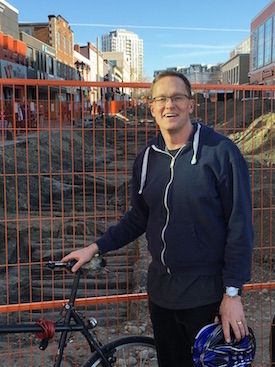Quick Bio

Name: Gary Klassen
Position: Director of Solutions Software
Company: Christie Digital Systems
Overtime: Follow Gary on Twitter, @gehr
SCN: What is your position, and what does it entail? What are your responsibilities?
Gary Klassen: I am the director of solutions software for Christie. I lead an incredible team of software developers who develop the software required to make it easier for anyone to create new and spectacular shared experiences, and intuitive and interactive 3D visualizations.
SCN: How long have you been at this position?
GK: I joined Christie in March 2016 and have already learned a lot from our customers and partners, as well as from the team at Christie.
SCN: How has your background prepared you for this role?
GK: I feel fortunate to have seen a number of new solutions grow from concept to product in several industries. I have worked with a variety of cross-disciplinary teams that span hardware and software, as well as design and technology, and collaborated with colleagues around the world. I am looking forward to bringing the best of what I have learned and blending it with the team at Christie.

In his free time, Klassen enjoys spending time with his family and cycling around Waterloo Region of Ontario, Canada. This photo was taken by his son in front of the ‘corduroy road’ recently discovered in the area.
SCN: What is the greatest challenge that you face?
GK: Christie’s expertise in, and tools for, designing solutions and shared experiences is less well known than its reputation for high-quality display and projector hardware. Our greatest challenge is building awareness of what is possible today.
SCN: Where do you see your market heading?
GK: Recently we’ve seen many examples of compelling interactive experiences developed for major city landmarks, sports venues, and theme parks. As the technology and tools to create these experiences becomes more accessible, we look forward to seeing more of these experiences in more places and for longer periods. And what is most exciting to me, is that as these experiences become easier to develop, designers are seeing new ways to tell stories and engineers and scientists are seeing new ways to visualize data.
When you have the ability to project interactive 3D content onto any surface—whether a wall, a building, or even a sculpture or 3D model—it becomes a wonderful and very natural way to visualize and interact with information. We are already exploring a number of compelling examples and the best will be those that haven’t even been imagined yet.














